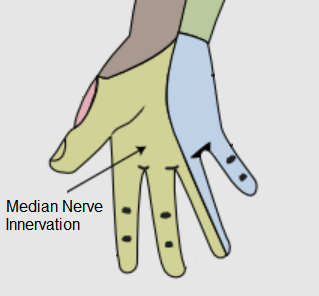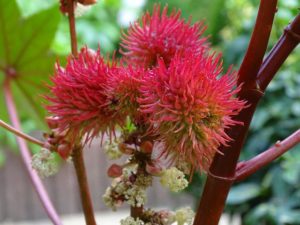Carpal Tunnel Syndrome

Carpal tunnel syndrome is a common problem that presents with pain, numbness and tingling in the wrist and hand. It can affect one or both hands and is caused by inflammation, pressure and entrapment of the median nerve as it passes through the wrist. The median nerve innervates the inner half of the thumb, the first, second and half of the third fingers. Symptoms of carpal tunnel should match this distribution. If tingling and numbness is present throughout the whole hand, carpal tunnel is less likely as a cause.
Around 4% of individuals world-wide suffer with carpal tunnel and women have symptoms more often than men (Genova 2020). Risk factors include jobs that require repetitive wrist motion and vibration exposure. Obesity, diabetes, menopause, heart failure, hypothyroidism and contraceptives can all change fluid dynamics in the body and also increase risks for the condition.
Standard Treatment
Initial treatments for mild to moderate carpal tunnel involve splinting, which holds the wrist in place, steroids and physical therapy. While most patients will respond to this approach, the majority will also relapse within a year following treatment. When these approaches fail, surgery is typically recommended. Carpal tunnel surgery involves techniques to release pressure on the nerve and reduce pain.
Studies on surgery show slightly better outcomes, although the difference is quite modest (Jarvik 2009). A recent review of all the research comparing surgery to non-surgical approaches used a five point scale to assess outcomes. For surgery, symptoms improved less than half a point at 12 months on average (Shi 2011). While conventional approaches provide some symptom improvements, the benefits are not robust.
Alternative and Integrative Approaches to Carpal Tunnel
Laser Therapy
I’ve previously discussed red light and laser therapy for treating a number of different health conditions. For carpal tunnel, most of the research has focused on low level laser therapy (LLLT). And while it appears to work at least as well as ultrasound (Rayegani 2019), the benefits seen with LLLT have been disregarded in some reviews (Cheung 20209).
However, benefits may be increased significantly with higher power. A recent trial compared LLLT to high intensity laser therapy (HILT) and found that both reduced pain. LLLT reduced pain just under 20% while HILT reduced pain more than 45% (Ezzati 2019). For treatment, higher power is likely more beneficial.
Extracorporeal Shockwave Therapy
While the name is a mouthful, extracorporeal shockwave therapy (ECST) is quickly becoming recognized for treating pain conditions. The therapy produces a small shock wave or blast wave through the intense, sudden release of stored electrical energy. These shockwaves are then focused on specific tissues in an attempt to initiate a healing response.
While the research in carpal tunnel is limited, the data available suggests that ECST may be a viable tool for improved outcomes. One study compared ECST therapy to placebo and showed that ECST reduced pain almost by half at 3 months (Gesslbauer 2020). The technique is non-invasive and generally well tolerated. More research on ECST and carpal tunnel can best help elaborate how and when it can be most effectivce.
Vitamin B6
As a treatment for carpal tunnel, vitamin B6 has been studied for decades, although a number of the older studies have notable weaknesses. A more recent study found that vitamin B6 can improve pain and sensory functioning in carpal tunnel syndrome. Based on the findings the authors concluded that vitamin B6 should be recommended as a part of treatment (Talebi 2013).
With vitamin B6 it’s also important to remember that too much can cause nerve damage. In the study, 120 mg daily was used.
Topical Treatment: Chamomile Oil

A study of 86 patients using topical chamomile oil for the treatment of carpal tunnel syndrome found significant benefits. After one month, pain and functioning scores had both improved by 0.7 points on a five point scale (Hashempur 2017). A separate trial on a topical extract of a different herb, Eremostachys laciniata, also suggested benefits. Unfortunately, Eremostachys is not commercially available (Eftekharsadat 2011).
Curcumin, Piperine and Lipoic Acid
Curcumin is a well known anti-inflammatory from turmeric that I’ve discussed previously. Piperine is a component of black pepper that improves the absorption of curcumin. Lipoic acid is a potent antioxidant that has shown some benefits for different types of nerve pain. The combination was significantly better at treating carpal tunnel combined with a standard anti-inflammatory than the anti-inflammatory alone.
In a clinical trial, carpal tunnel patients reduced their pain 28% with a standard anti-inflammatory. When the anti-inflammatory was combined with curcumin, piperine and lipoic acid, their pain was reduced by 71% (Pierro 2013). Additional research is needed to confirm the findings, as the study had ties with the company that produces the supplement. However, other studies have found significant pain relief in carpal tunnel using just lipoic acid alone (Passiatore 2020, Guizar 2018)
Conclusions
Carpal tunnel syndrome is a common condition that can cause significant pain and disability. Standard treatments often help reduce pain, although results on average are modest at best. Some alternative approaches, like high intensity laser therapy, ECST, vitamin B6, chamomile oil, curcumin and lipoic acid also appear to show promise with minimal risks.



